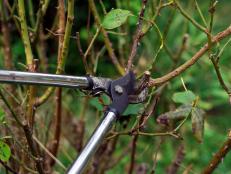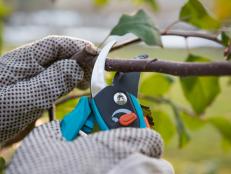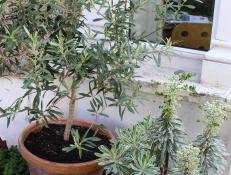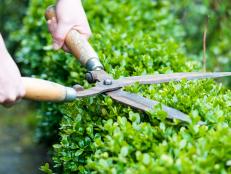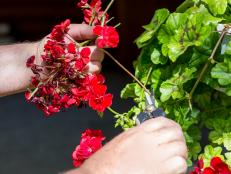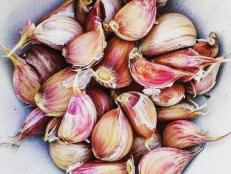Grow Guide: Pruning Pointers and Deck Protection


Q:
I didn’t get around to pruning my fruit trees in the winter, and they have flowered and leaves and small fruit. Have I messed up really bad?
ANSWER:
You have lots of company in this - too few home gardeners prune fruit trees as hard as commercial fruit growers do, because we don’t realize how pruning affects both fruit production and the health of the trees themselves. But it probably isn’t too late.
Not that you actually have to prune your trees; some gardeners like the shape and flowers of larger plants than the fruit itself, and are quite content to get a little fruit every now and then.
Still, without trying to put too fine a horticultural point on this, there are some important reasons to prune most fruit trees, including to improve air circulation for disease reduction, create more sunlight deeper into the tree canopies, and to reduce the amount of fruit so what is left will be larger and sweeter.
How-To
First off, it is important to remove dead, diseased or broken limbs and branches. You can do this any time of the year.
Another thing you can do nearly any time is to thin out clutter. Trees with too many multiple trunks, limbs and branches tend to have less air circulation, more diseases and less fruit. Plus it makes picking more difficult.
You can remove dead or cluttered stems any time. Start with cutting out one or two or more trunks or main limbs that are close together, which is dramatic but really helps lighten the tree’s load.
Then go back in and remove cluttered branches from the stems you have left. While you are at it, go ahead and cut off a few cluttered branches, so the ones left have plenty of room to themselves.
Make the Right Kind of Cut
By the way, when cutting limbs and branches, try to not leave any stubs, which will likely decay and cause internal problems for the trees down the road. Whatever you are cutting off, make the cut as close to where it starts growing as possible, or as close to a branch that is growing in the direction you want. No need to make a huge cut, just don’t leave stubs more than an inch or so long.
You will find that this thinning is plenty for most fruit trees. It will not only open the plants up for sun and air circulation, and help balance the tops of the trees with their roots, but also by reducing the amount of fruit a tree can produce, what is left will be bigger and juicier!
Just get this done as soon as you can, and make plans to keep on top of it in the winter when you can better see what you are doing - and when there is less fruit visible which may soften your heart too much to make important cuts.
QUESTION:
My deck is getting old, and the wood is starting to crack and splinter. How can I make it last a little longer before having to replace it?
ANSWER:
Wooden decks do have a finite life, but you can keep them sturdy and safe - and longer lasting - by giving them a little regular care.
You can slow the natural drying and cracking and decaying of wooden boards by applying a penetrating wood sealant every year, which can be brushed or even sprayed on with a hose-end sprayer. Clean the deck first, preferably with a pressure washer, then sand any burrs or splinters.
Most sealants can have a little paint added to stain the deck a brighter color as well.
And when you do get around to replacing the deck, be sure your contractor knows what “bark side up” means - look at the end of a board, and you will see how the “growth rings” of the wood are curved. By placing a board so the rings go up and back down like a rainbow, as opposed to a down and up like a sad frown, the wood will shed water more easily instead of letting it soak in and cause cupping and cracking.






